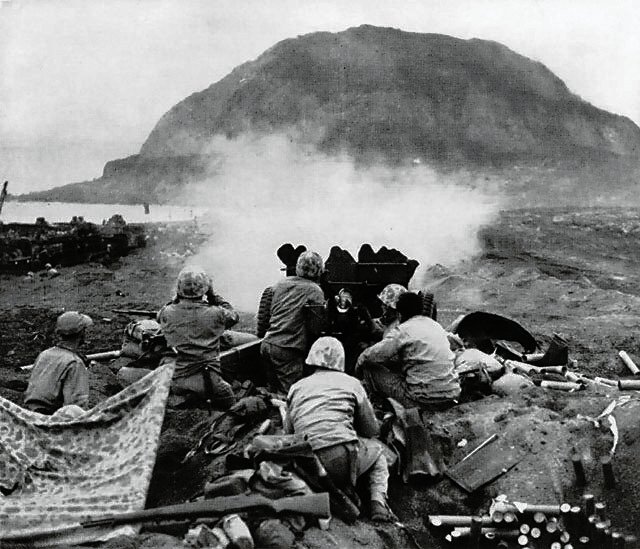On February 19, 1945, U.S. Marines embarked on a momentous mission as they made a historic landing on the Japanese island of Iwo Jima. This marked the beginning of one of the most brutal and strategically important battles of World War II. The objective was to capture the island and its airfields, which would serve as a crucial launching point for future attacks on the Japanese mainland.
The Battle of Iwo Jima lasted for five grueling weeks, resulting in significant casualties on both sides. It was a battle of immense importance, as the outcome would have a significant impact on the overall progress of the war in the Pacific. The Japanese had heavily fortified the island, turning it into a formidable stronghold.
The decision to invade Iwo Jima was not taken lightly. The island’s strategic location, midway between Tokyo and the Mariana Islands, made it a prime target for the United States. Its airfields would provide a crucial base for American bombers, enabling them to conduct long-range missions over Japan.
The battle commenced with an intense naval and aerial bombardment of the island. The U.S. forces, led by Lieutenant General Holland Smith, landed on the southeastern coast of Iwo Jima. However, the Japanese defenders had prepared an intricate network of tunnels, bunkers, and fortified positions, making the advance incredibly challenging.
The Japanese forces, under the command of Lieutenant General Tadamichi Kuribayashi, were determined to hold their ground at all costs. They employed a strategy of entrenched defense, using the island’s natural volcanic terrain to their advantage. The black volcanic sand and rocky landscape made it difficult for the U.S. troops to maneuver.
The battle quickly devolved into brutal close-quarters combat. The U.S. Marines faced heavy resistance from the Japanese defenders, who fought fiercely from their well-fortified positions. The fighting was relentless, with both sides suffering heavy casualties.
One of the most iconic moments of the Battle of Iwo Jima was the raising of the U.S. flag on Mount Suribachi. On February 23, 1945, a group of Marines successfully reached the summit and planted the American flag, capturing the hearts and minds of people back home. The image was captured in a now-famous photograph by Joe Rosenthal, which went on to become one of the most enduring symbols of American heroism and resilience.
Despite the capture of Mount Suribachi, the battle was far from over. The U.S. forces still had to contend with the well-entrenched Japanese defenders across the rest of the island. The fighting continued, with the Americans gradually gaining ground through sheer determination and superior firepower.
The Battle of Iwo Jima finally came to an end on March 26, 1945, when the last pockets of Japanese resistance were subdued. The cost of victory was high, with the U.S. suffering over 26,000 casualties, including nearly 7,000 killed in action. The Japanese defenders fought tenaciously, with only a few hundred out of the estimated 21,000 surviving the battle.
The capture of Iwo Jima proved to be a significant milestone in the Pacific theater of World War II. The airfields on the island were immediately put to use, allowing American bombers to conduct relentless airstrikes on the Japanese mainland. This, combined with other strategic victories, ultimately led to Japan’s surrender in August 1945.
The Battle of Iwo Jima remains etched in history as one of the most hard-fought and iconic battles of World War II. The sacrifices made by the U.S. Marines and the bravery displayed by both sides serve as a testament to the human spirit in the face of adversity.
For more information about the Battle of Iwo Jima, you can refer to the following external references:
- History.com – Battle of Iwo Jima
- National Park Service – The Battle for Iwo Jima
- Encyclopedia Britannica – Battle of Iwo Jima
The Battle of Iwo Jima stands as a testament to the bravery and sacrifice of those who fought in one of the most pivotal battles of World War II. It serves as a reminder of the immense challenges faced by the U.S. troops and the resilience they displayed in the pursuit of victory.

